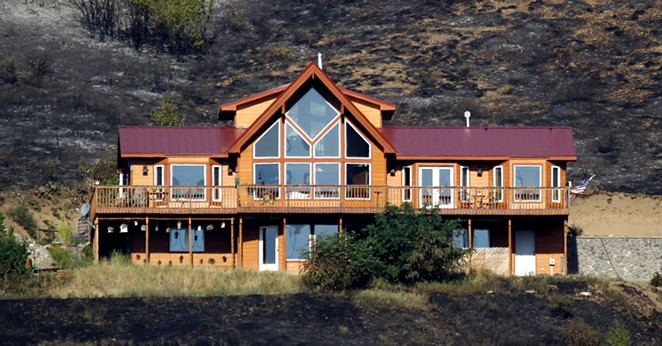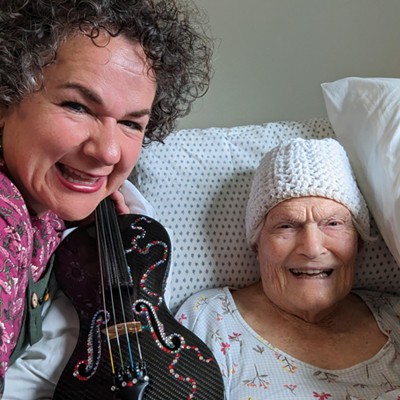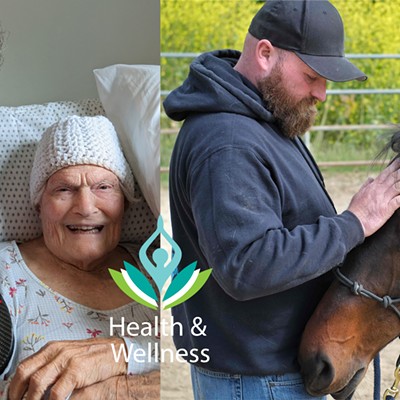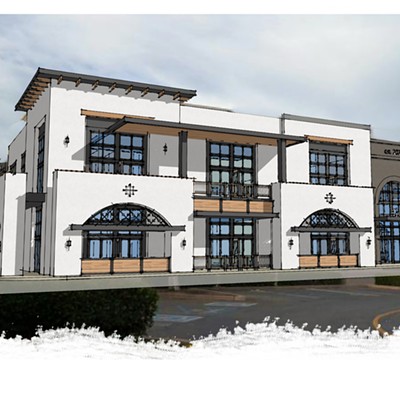Nicole Pratt couldn’t believe her eyes when she read the letter from her insurance company. Kemper said it was dropping her home insurance.
“We have lived and had the same homeowners insurance for our house since we moved there in 2009,” said Pratt, who lives in northern San Luis Obispo County. “Then out of nowhere, we got this notice that they were dropping our coverage due to fire risk.”
She is just one of a slew of Central Coast-based homeowners who are currently scrambling to find new home insurance after their providers unexpectedly drastically raised their rates or dropped their coverage due to concerns about fire risk as the season approaches.
“All of these years we never made a claim,” Pratt said. “Then, like everyone else, we just get dropped.”
Santa Maria-based insurance provider Jaime Flores, told the Sun that homeowners all over South SLO County and North Santa Barbara County are experiencing the same thing as Pratt.
“Any outskirt areas in northern Santa Barbara and SLO County—places like Arroyo Grande, lakefront Naciemiento, Los Alamos,” he said. “I’ve been in the industry for 16 years, in that time frame, I’ve never really seen anything like this happen.”
Santa Barbara County Fire Marshal Rob Hazard said the issue also reaches far into southern Santa Barbara County.
“Montecito, Santa Barbara city, Carpinteria foothills are some of the places we know had their policies dropped,” he said. “We even had people in Santa Ynez Valley and adjacent to Tepusquet Canyon—completely different areas—have their policies dropped.”
According to Hazard, many of those latter areas lack the chaparral growth and rolling hills that are often cited as natural fire hazards, meaning insurance companies should be looking at risk factors like construction and building code instead.
“If the home insurance was approaching this properly, they would be looking at the homes themselves—asking things like, ‘Is the home under construction?’ ‘Is it under code?’” he said. “All of this stuff is a defined science. This isn’t a mystery.”
Part of that defined science is rooted in the risk maps that Cal Fire provides to insurance agencies.
“By legislation, insurance companies are supposed to utilize [Cal Fire] risk modeling when making these policy decisions,” Hazard said. “Currently, however, all that is available right now are official [Cal Fire] maps that determine hazard.”
Cal Fire Pre-Fire Planning Deputy Chief Scott Witt said that hazard maps don’t necessarily take current-day factors into account.
“Hazard maps are a 15- to 30-year look focusing on what is going to happen and what will come back vegetation-wise. … It’s about long-term change,” Witt said. “When putting them together we don’t take into account risk mitigation, we don’t look at quality or size of the fire department, we don’t look at water supply, and we don’t look at fuel treatments.”
Witt also explained that from his understanding, most insurance companies use in-house models.
“Each company assumes that their models will be able to provide and they don’t share those models’ info,” he said. “If they feel internally that they have too much risk in one community based on their in-house models, they will drop an area.”
Flores said that most of the carriers he works with provide his business with data from their systems that are meant to optimize the areas where they can and can’t offer coverage.
“Most carriers provide that data that we draw that conclusion of coverage from,” Flores said. “Once we put the address in and they say they can’t provide, we move on to the next company to see if they might be able to cover where the others could not.”
The Sun reached out to the California Department of Insurance to clarify how companies were determining the areas in which they would provide coverage but didn’t receive a response before press time.
Flores said he’s sympathetic to homeowners facing their coverage being dropped but also acknowledged that insurance companies currently can’t afford to take big risks in insuring areas that they see as even remotely close to being at risk for fire.
“A lot of remapping is happening right now and it’s affecting companies, so from an industry standpoint I get it, but from a customer’s perspective, it’s scary,” he said. “The biggest piece of advice I can give is go over whatever plan you have currently with your agent to make sure it isn’t about to be canceled or lapse.”
Upon receiving her letter, Pratt immediately reached out to local and national groups to see if anyone could provide her with coverage but received the same answer again and again: “We will not cover you, your home is in a fire hazard zone.”
According to Pratt, however, there is one issue with the insurance providers’ reasoning: Her home isn’t at high risk. In fact, Pratt said, she and her husband have done everything possible to ensure their home is fire safe.
“My husband, who is a fireman for the city of SLO, comes home and weed whacks like it’s a second hobby,” she said with a laugh. “We have six goats eating weeds where he doesn’t weed whack, we have a pool we can draw water from. Nothing about our property is even close to being a risk for any sort of burn or fire.”
When Pratt did receive a response, she said that the rate increase quoted was often double or triple the usual rate of $1,900. After talking to nearly 15 different minor and major providers, Pratt realized she either could apply for the state’s FAIR Plan Insurance or go with Farmers Insurance.
“We were told by every one of the private brokers, [the FAIR Plan] is a last resort insurance. It’s not only very expensive, but you would need to get a secondary insurance to cover everything home related that isn’t fire,” she said. “I was so freaked out and our hands were tied, so we ended up going with Farmers.”
Farmers informed Pratt that her home coverage would be contingent on a home inspection for fire risk and would not be guaranteed past a year.
“They said—should the home inspector they send out approve our property—they could cover us for up to a year but after that, there is no guarantee,” she said. “Even if it isn’t as expensive as the FAIR Plan—which had rates up to $5,400—it’s still almost triple my current rate, costing $4,800.”
With residents across the Central Coast and California facing this exact scenario, fire officials like Witt and Hazard said that in the end, it is the communities that end up suffering the most from changes like this.
“[The insurance companies] only see what they see, limited knowledge and all,” Hazard said. “It’s tragic because it hurts their industry in the long term and even more so for residents, who see it as these companies not caring. If this continues to happen en masse—no matter where in the state that is—you will have communities that will never be able to recover.”
Reach New Times Staff Writer Adrian Vincent Rosas, from the Sun’s sister paper, at [email protected].













